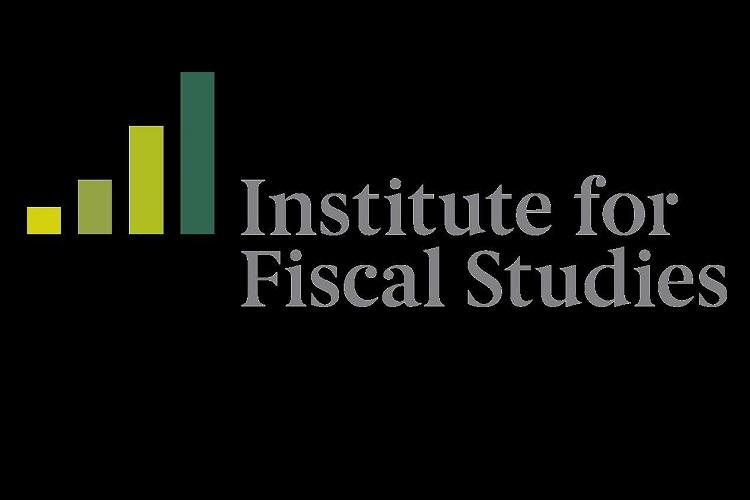Student finance reforms which reduce graduate debt levels typically benefit high earning graduates the most

In October, alongside a significant change to the threshold at which student loans are repaid, the Prime Minister Theresa May announced an inquiry into the student loan system.
A new IFS Briefing Note, entitled “Options for reducing the interest rate and reintroducing maintenance grants” by Chris Belfield (Research Economist at IFS), Dr Jack Britton (Senior Research Economist at IFS), and Louis Hodge (Research Assistant) was published on Thursday 16 November 2017.
They explore two other options for reform to aspects of the student loan system that have been widely discussed. The first is the high interest rates assigned to student debt – currently RPI + 3% while studying and RPI + 0-3%, depending on income, after leaving university. The second is the fact that – following the abolition of maintenance grants in 2016 – those from the poorest backgrounds currently graduate with the largest debts.
Key findings:
- Reducing the interest rate doesn’t impact up front government spend, but it does increase the long run cost of the system. The long run cost of switching to RPI + 0% would be £1.3 billion per year. This compares to the £2.3 billion estimated long run cost associated with increasing the repayment threshold from £21,000 to £25,000.
- Reducing interest rates only reduces the repayments of the highest earning graduates. This is because only high earning graduates end up repaying the interest on their loans. For most graduates this is written off at the end of the repayment period. The lowest earning 70% of graduates would be completely unaffected by changing the interest rate to RPI + 0% for all graduates.
- Despite having no impact on upfront spending, reintroducing maintenance grants would increase the deficit. Grants count towards the deficit and loans do not, even if they are not expected to be repaid. Bringing back grants similar to those in place before 2016 grants would add around £1.7 billion to the deficit per year.
- The long run cost of bringing back grants would be considerably lower, however. This is because a high proportion of the additional maintenance loans given to students from low-income backgrounds are not repaid anyway. The long-run cost of bringing back the pre-2016 style grants would be around £350 million a year.
- Reintroducing maintenance grants only reduces the repayments of graduates who grew up in low-income households who go on to have high earnings. Only the highest-earning graduates end up paying of the additional maintenance loans under the current system. The majority of those eligible for the full maintenance grant would see no change to their lifetime repayments, while those who go on to high earnings could save around £22,000 over their lifetimes.

Commenting on the analysis, Alistair Jarvis, Chief Executive of Universities UK, said:
“We agree with the IFS that there are ways the government could improve the current student funding system in England. While the current system has provided sustainable funding and promotes access, it needs to be better understood and needs to feel fairer to our students and their families. This analysis from the IFS provides a useful contribution to the ongoing debate.
“Students tell us that it is cash in their pockets while studying that matters most. We would like to see the government provide new investment to bring back maintenance grants aimed directly at those students who find it hardest to meet day-to-day living costs when they are studying. We also need to boost flexible learning through more government support for adults to retrain or improve their skills.”
Chris Belfield, an author of the report, said:
“Some of the features of the current student loan system are clearly deeply unpopular. Bringing back maintenance grants or reducing the positive real interest rate might help to address these concerns.
“However, these policies would increase the long-run cost to government and predominantly benefit high-earning graduates”
The authors would like to thank the Department for Education for providing the linked NPD–HESA data, and explained:
“Our estimates focus just on young English-domiciled full-time undergraduate students. We assume that earnings will grow in line with the Office for Budget Responsibility forecast for average economy-wide earnings growth from the January 2017 Fiscal Sustainability Report and the March 2017 Economic and Fiscal Outlook. We assume no dropouts and that all students take out the full amount of the loans to which they are entitled and pay them back according to the repayment schedule (with no early repayments and no avoidance).
“Students repay 9% of their income above a threshold which increases with average earnings growth from 2021. Any debt left outstanding 30 years after graduation is written off. Therefore, if a graduate has not finished repaying the principal value of their loan after 30 years, all the interest accrued is written off and the graduate is unaffected by the interest rate charged.”
“Unless stated otherwise all figures are in 2017 prices. Government cost figures have been discounted back to 2017 using the government’s discount rate for the student loan system of RPI+0.7%. Student cost figures have not been discounted, but are deflated back to 2017 prices using CPI inflation.
“To estimate the total cost of the system to government, we use 2015–16 HESA statistics on the number of English-domiciled full-time undergraduate students that started university in 2015–16.”










Responses